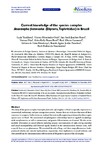Use este identificador para citar ou linkar para este item:
http://www.alice.cnptia.embrapa.br/alice/handle/doc/1036295Registro completo de metadados
| Campo DC | Valor | Idioma |
|---|---|---|
| dc.contributor.author | VANÍCKOVÁ, L. | pt_BR |
| dc.contributor.author | HERNÁNDEZ-ORTIZ, V. | pt_BR |
| dc.contributor.author | BRAVO, I. S. J. | pt_BR |
| dc.contributor.author | DIAS, V. | pt_BR |
| dc.contributor.author | RORIZ, A. K. P. | pt_BR |
| dc.contributor.author | LAUMANN, R. A. | pt_BR |
| dc.contributor.author | MENDONÇA, A. de L. | pt_BR |
| dc.contributor.author | PARANHOS, B. A. J. | pt_BR |
| dc.contributor.author | NASCIMENTO, R. R. do | pt_BR |
| dc.date.accessioned | 2016-02-05T11:11:11Z | pt_BR |
| dc.date.available | 2016-02-05T11:11:11Z | pt_BR |
| dc.date.created | 2016-02-05 | pt_BR |
| dc.date.issued | 2015 | pt_BR |
| dc.identifier.citation | ZooKeys, v. 540, p. 211-237, 2015. | pt_BR |
| dc.identifier.uri | http://www.alice.cnptia.embrapa.br/alice/handle/doc/1036295 | pt_BR |
| dc.description | The study of the species complex Anastrepha fraterculus (Af complex) in Brazil is especially important in a taxonomical, evolutionary and pest management context, because there are evidences that some of them may occur in sympatry. In this review, we analyzed the main results supporting evidences that three cryptic species occur in Brazil. The taxonomical and phylogenetic relationships based on eggshell morphology, adult morphometrics, as well as cytotaxonomy and genetic differentiations are discussed. We also review available information on sexual behavior including acoustic communication of males during courtship and sexual incompatibility; and chemical signals involved in the communication between sexes, with a special focus on sex pheromones. We examined the role of long- and short-range pheromones (maleproduced volatiles and cuticular hydrocarbons, respectively), their implications in sexual isolation, and their possible use for chemotaxonomic differentiation of the putative species of the Af complex. | pt_BR |
| dc.language.iso | eng | eng |
| dc.rights | openAccess | eng |
| dc.subject | América do Sul | pt_BR |
| dc.subject | Mosca-das-frutas | pt_BR |
| dc.subject | Fruit fly | pt_BR |
| dc.subject | Pest | pt_BR |
| dc.title | Current knowledge of the species complex Anastrepha fraterculus (Diptera, Tephritidae) in Brazil. | pt_BR |
| dc.type | Artigo de periódico | pt_BR |
| dc.date.updated | 2016-03-28T11:11:11Z | pt_BR |
| dc.subject.thesagro | Inseto | pt_BR |
| dc.subject.thesagro | Controle biológico | pt_BR |
| dc.subject.thesagro | Praga | pt_BR |
| dc.subject.thesagro | Anastrepha Fraterculus | pt_BR |
| dc.subject.thesagro | Comportamento Sexual | pt_BR |
| dc.subject.nalthesaurus | Biological control | pt_BR |
| riaa.ainfo.id | 1036295 | pt_BR |
| riaa.ainfo.lastupdate | 2016-03-28 | pt_BR |
| dc.identifier.doi | 10.3897/zookeys.540.9791 | pt_BR |
| dc.contributor.institution | LUCIE VANÍCKOVÁ, Instituto de Química e Biotecnologia, Universidade Federal de Alagoas; VICENTE HERNÁNDEZ-ORTIZ, Instituto de Ecología A.C., Xalapa, Veracruz; IARA SORDI JOACHIM BRAVO, Universidade Federal da Bahia; VANESSA DIAS, University of Florida, Gainesville, FL; ALZIRA KELLY PASSOS RORIZ, UFBA; RAUL ALBERTO LAUMANN, CENARGEN; ADRIANA DE LIMA MENDONÇA, Instituto de Química e Biotecnologia, Universidade Federal de Alagoas; BEATRIZ AGUIAR GIORDANO PARANHOS, CPATSA; RUTH RUFINO DO NASCIMENTO, Instituto de Química e Biotecnologia, Universidade Federal de Alagoas. | pt_BR |
| Aparece nas coleções: | Artigo em periódico indexado (CPATSA)  | |
Arquivos associados a este item:
| Arquivo | Descrição | Tamanho | Formato | |
|---|---|---|---|---|
| Beatriz2015.pdf | 977,57 kB | Adobe PDF |  Visualizar/Abrir |









